Train Lowboy Drivers to Deliver Quality
BY John Ball
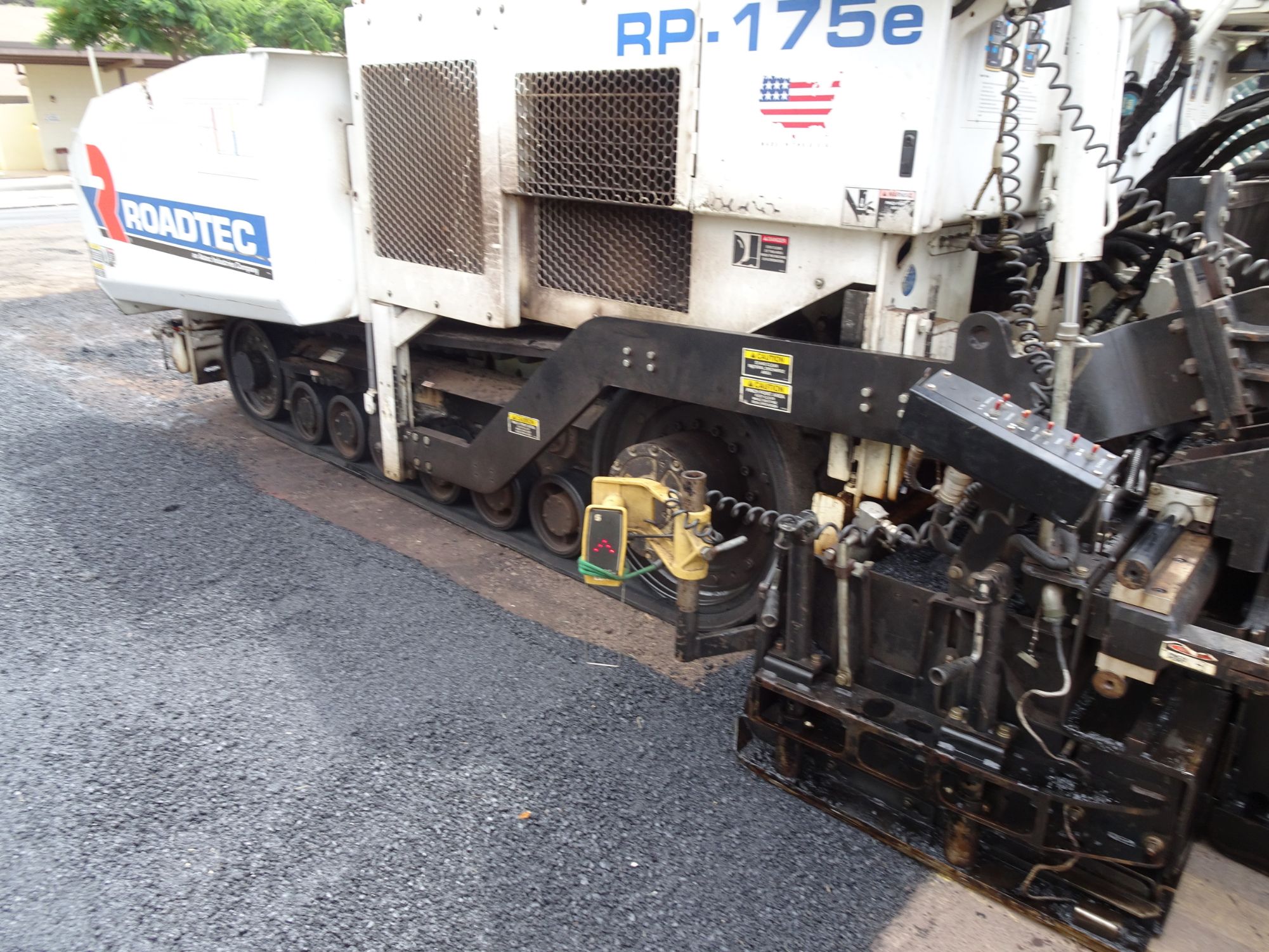
I usually talk about paving ideas. My passion is for getting top quality paving, and that usually involves a conversation about setting the screed and getting mix moved correctly through the paver and rolled right. But let’s look at delivering equipment for a minute. Damaged pavers or dinged-up rollers will cost you in quality, so it’s vital that the lowbed driver who loads and unloads equipment is careful and steady at his job.
For this new paving season, workers should be very aware of staying six feet away from one another whenever possible. Workers who used to carpool to the jobsite are pairing off so only one or two employees are in a company vehicle at a time. This is a new best practice for a healthiest work environment that still lets us get the nation’s infrastructure built and maintained. If you’re watching the lowbed driver from a distance, you might not be able to stop him before he makes a mistake with equipment. Training him now saves a headache later. Here are some best practices he needs to know before he starts the shift.
Start by double-checking the push rollers on the front of the paver. Make sure the chains that may have been looped around the push rollers have been removed before trying to back the paver off the lowbed.
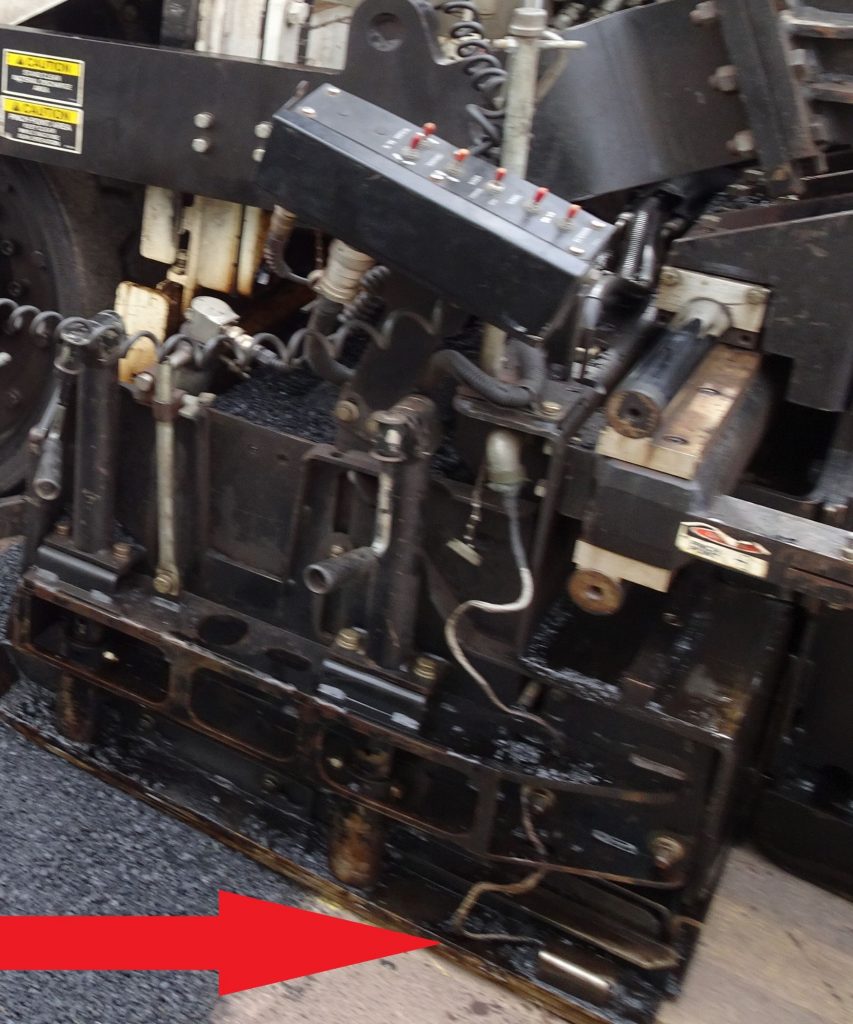
This exposed wire by the endgate could offer a 440-volt shock to workers who aren’t paying attention. Make sure the lowbed driver understands the importance of protecting the endgate and all its components during transport. Give him authority to call for the mechanic if a safety hazard like this crops up.
The tow point cylinder—on both sides of the paver—needs to be all the way down. This will ensure the back of the screed is lifted. If the screed bottoms out when unloading, the tow arms will bend. While the tow arms are usually made of solid steel, the bump that travels through them if the screed rams into the ground will cause substantial damage. You can give the depth crank a turn or two to elevate the butt of the screed a bit more, but the goal is to have the tow point cylinders all the way down before you gingerly back the paver down the ramps. Keep in mind, you’ll lift the screed up but you don’t want to lock it. Locking it actually steals a couple inches from the height you want here, so let it hang for moving on and off the trailer.
Check the augers to ensure they are lifted all the way up. Augers have about 5 ¾ inches of room to move up or down; you want them all the way up so they avoid hitting anything. The delta plate below the augers cannot move, so take a look at the ramp before backing the paver down. If the ramps aren’t lined up correctly and you hit them as you back down, you could bend the delta plate. If it gets damaged, you’ll have to replace it.
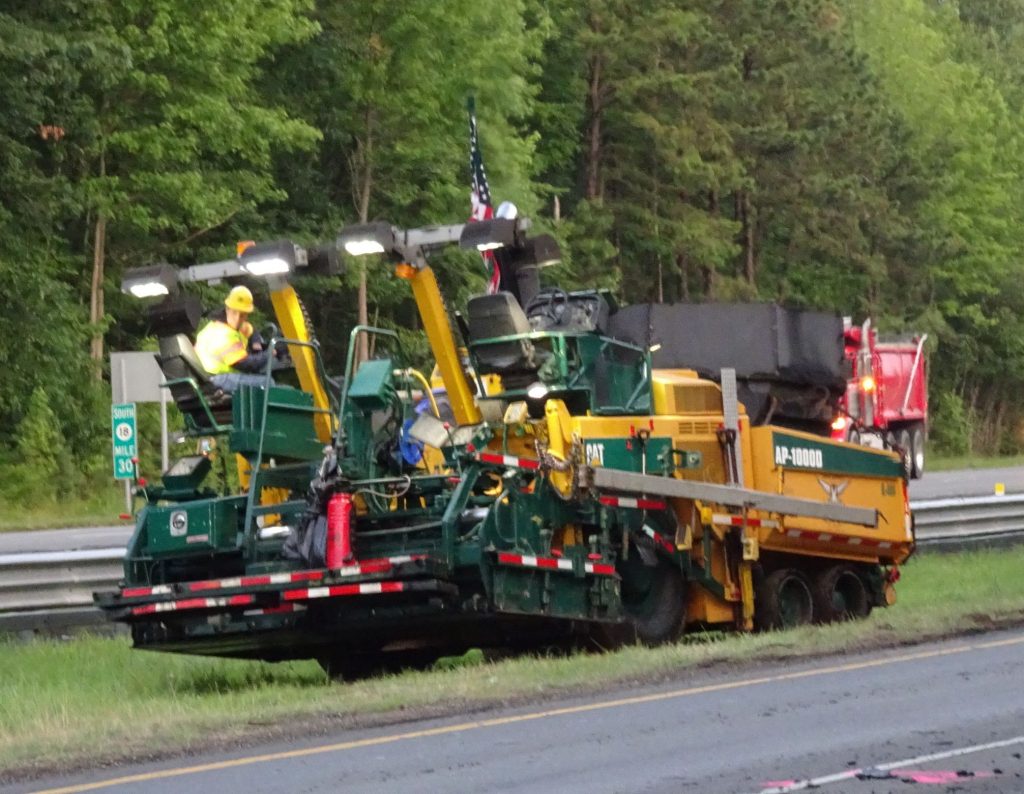
Here you can see the lights have been lowered for safe transport. Both photos courtesy of John Ball, Top Quality Paving & Training
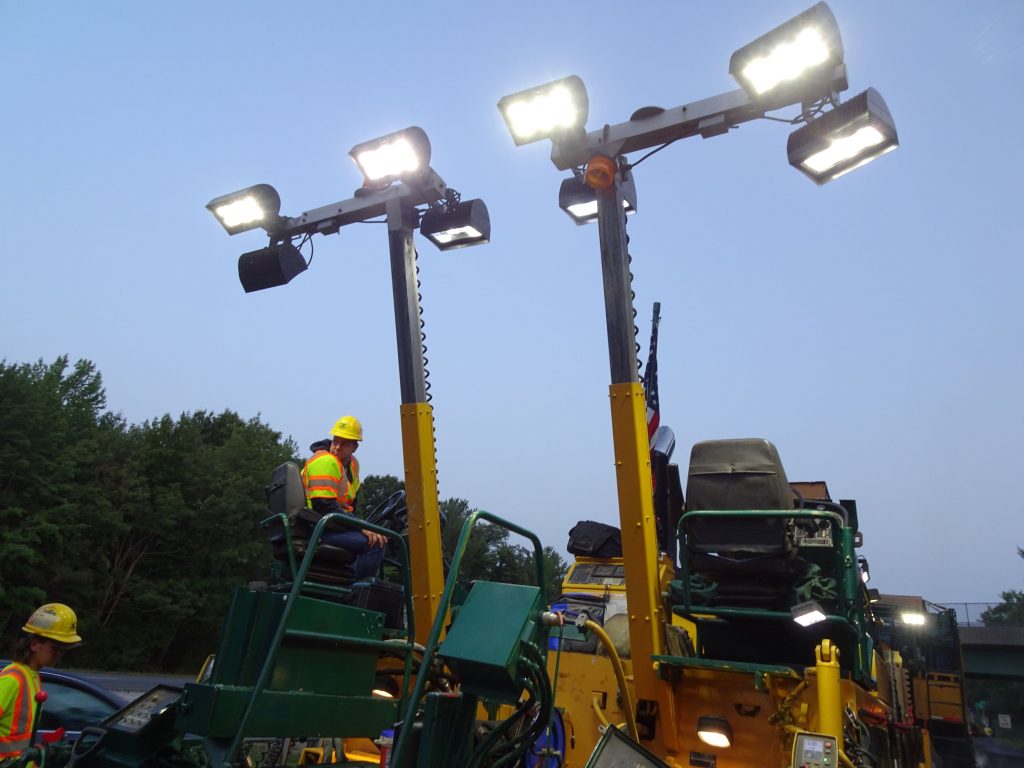
Here you can see the hydraulically powered light towers that The Earle Companies uses on its pavers are extended for safe paving.
Look at the end gates. These should have been level with—or a little higher than—the main screed plate for loading.
The end gates are spring loaded. They have some “give” in them with shock absorbers and spring tension, and might drop an inch or so when the screed is lifted. Be aware that rear-mounted screeds especially let the end gates stick out the back. Watch for these to avoid bumping and damaging them.
Watch for the electrical wires on the end gates, too. Now that our machines have heated endgates and electrical systems to make our paving more precise, we have to be aware of where the wires are. Frayed or damaged wires present a shock hazard—as well as poor performance—so the lowbed driver must be careful not to damage wires and controls when loading and unloading equipment.
When it comes to the feed sensor, the best thing to do is remove it before loading. Put the feed sensors and their cords in the compartment for transport to protect these expensive components from damage.
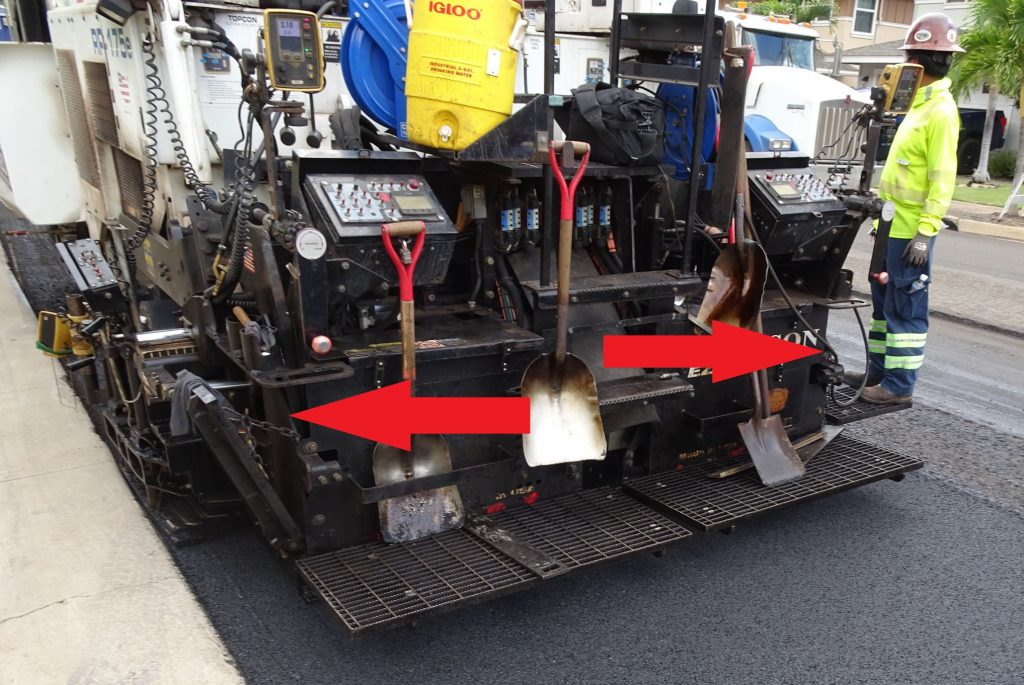
Chain the screed operators’ steps out of harm’s way before transport.
Watch out for the lights and mirrors we’ve added to the paver, as well. Move magnetic mirrors and strobes to a safer space; then fold down or otherwise secure and lock light structures in place so roadside vegetation doesn’t scrape them off or damage them in some other way. Notice in the picture of the roller on this page that the mirrors are on arms that can swing in and lock in place. The paver in the pictures on this page has hydraulically controlled light poles that can be lowered for transport. Make sure the lowbed driver takes the time to secure these elements.
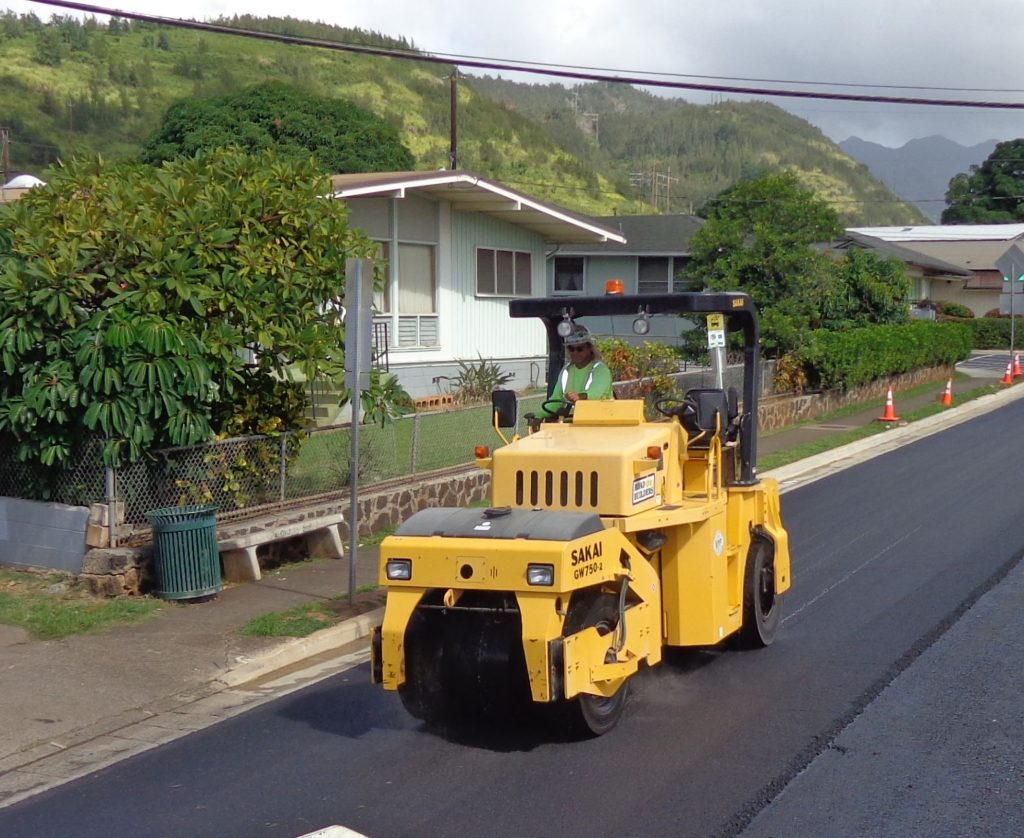
The mirrors on this roller extend beyond the frame for best visibility during operation. For transport, the lowbed driver should swing them in on their arms/poles and lock them into place. Photo courtesy of John Ball, Top Quality Paving & Training
At the back of the paver, the screed operator’s steps should be lifted and chained out of harm’s way before loading.
All of these tasks take time and attention to detail. But all of these tasks matter to ensure a safe and well-maintained paver is delivered to the paving site for a top quality job. The lowbed driver needs to take his time to make sure he follows company policy and state regulations for preparing his load and keeping equipment secure. Then take it slow and steady to drive equipment safely off the trailer. By taking it slowly, he is more likely to sense any problems before they become a catastrophe.
For example, when unloading on a gravel roadway, a soft subbase could spell disaster. The experienced and careful lowbed driver will know what to do if the paver starts to sink and will be able to adapt to protect this expensive and vital piece of equipment. If he has noticed a soft subgrade prior to unloading, he can pull forward or pick a different place to stage equipment. If he hasn’t noticed a soft subgrade, he’ll take things slowly and double-check to make sure the screed is lifted high.
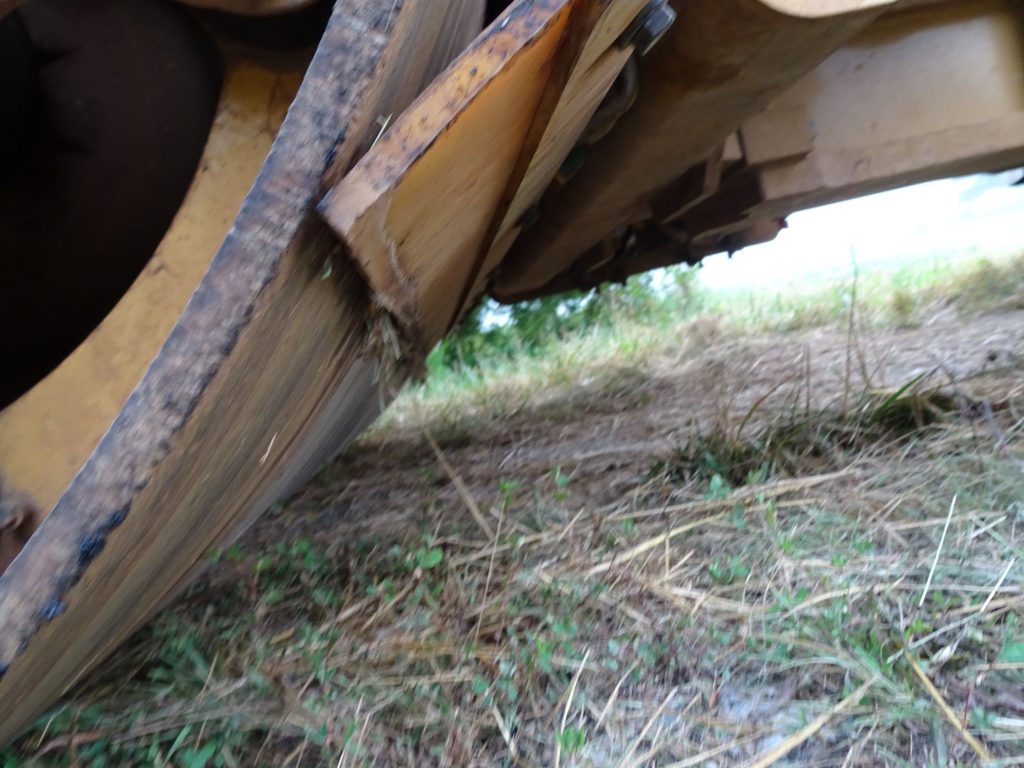
You want to release the tension on the roller’s scraper bar prior to moving the machine across a gravel or weeded area. Don’t let the drum pick up and retain rock and debris between the scraper bar and the drum’s surface. This only leads to early wear on the scraper bar and deposit of debris on your new mat.
Lift scraper bars, coco mats
Roller operators know they need to lift coco mats off hot pneumatic tires at the end of a shift to prevent a melted, goopy mess from delaying startup the next day. Locking scraper bars off roller drums also prevents the collection of gravel, dirt, leaves and other mess when the lowbed driver moves the equipment to and from the trailer. Release the springs so the scraper bar isn’t touching drum during transport. The pictures on these pages offer more suggestions for protecting the roller during transport.
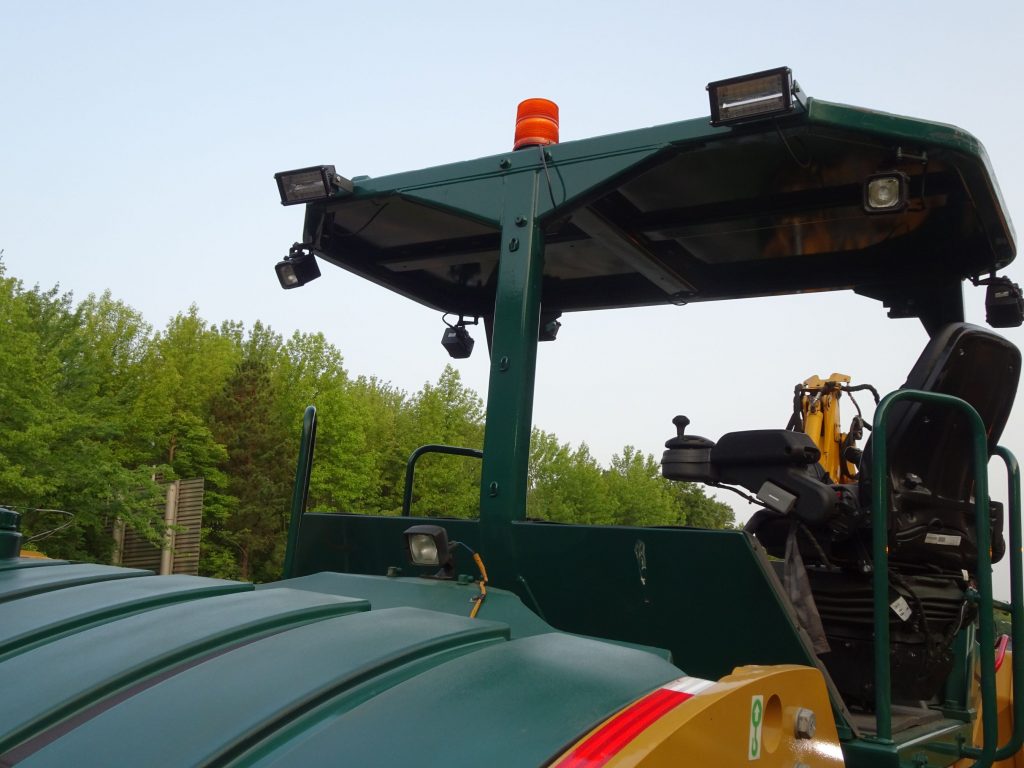
The strobe light on top of this canopy is held in place by a magnet. It’s easy to “stick” it to the underside of the canopy, thus protecting it from overhead branches during transport. Many OEMs have lighting packages that put fixtures inside or under canopies, directing light outward, thus protecting fixtures while giving operators an expanded nighttime workzone.
Find your keys
Finally, make sure the equipment operator has the keys. Once he’s done his job, the lowboy driver leaves for the day.
Who has the keys? Don’t assume the paver operator has the keys for the paver and the roller operators have keys for their machines, and so on. Before the driver leaves the site, the last item on his checklist should be to turn over the keys for the equipment, for control panel padlocks and so on.
These are just a few of the training tips you should share with your lowboy drivers before season startup has them in the field. They may be within shouting distance of foremen and equipment operators, but the new safe-distance rules could prevent foremen and operators from seeing potential problems. Solve those problems with good training ahead of time and keep top quality paving top of mind.
John Ball is the proprietor of Top Quality Paving & Training, Manchester, New Hampshire. He provides personal, on-site paving consulting services around the United States and Canada. For more information, contact him at (603) 493-1458 or tqpaving@yahoo.com. He’s also an advisor for the online training course from AsphaltPro Magazine, Asphalt Paving 101.
